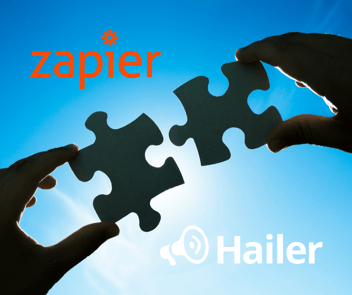Understanding System Integration: Definition, Platforms, and Benefits
Nico LarsenIf you run a business, you may have multiple systems to manage various processes. However, you may find yourself in a situation where you realize the need to share data seamlessly between these systems. The solution to this challenge is system integration.
What is System Integration?
System integration is like a virtual truck that transports data between different systems. To ensure smooth data transfer, it's crucial that the loading dock, truck size, and connections at both ends match perfectly. If anything is misconfigured or data format discrepancies, data won't flow smoothly.
Apart from precise configuration, it's essential to understand that integration adds complexity to modern cloud services. Every change needs to be accounted for in three places instead of just one. Both integrations and operational software require continuous maintenance to function efficiently.
Defining Your Integration
When defining integration, you must consider what kind of data needs to be moved—whether it's entire files or individual field data. Once you have this clarity, the next questions are about the route data should take and how frequently it should move. Real-time data transfer differs from daily batch processing, and these choices can significantly impact costs.
Creating a data structure diagram or field mapping is a valuable step. This process should delve into specific field-level details.
Technical Choices
On the technical side, there are multiple solutions, and selecting the right technology is a critical decision that should be made early in the process. You can choose between building your own point-to-point integration or using an integration platform.
Point-to-point integration can be customized, but it requires substantial in-house technical expertise. Additionally, you need to consider ongoing maintenance and managing changes in different system interfaces.
Integration platforms offer a more straightforward solution but involve the data passing through a third-party cloud, which might be located in the United States, for example. Modern integration platforms primarily operate on low-code or no-code principles, making configuration possible directly through a web browser.
For small data transfers, Zapier is an excellent option, ideal for tasks like importing orders from an e-commerce website into an order management system or sending emails from a CRM solution.
On the other hand, OneIO is better suited for handling larger data transfers and more complex error handling, such as exporting line items from an ERP system to accounting software or tracking payments from accounting back to ERP.
Our Approach at Hailer
At Hailer, our philosophy is to minimize the need for integrations. We aim to provide a comprehensive end-to-end solution centered around our clients' core business. We collect input data from various sources, such as online leads or our clients' systems. For data collection, we rely on Zapier. In our operational activities, we strive to create a functional overall solution, reducing clicks to a minimum and ensuring that the entire organization uses the same data. Internal integrations are achieved by creating linkages between different processes rather than launching integration projects. Once the entire operational process is modeled, we typically transfer the generated invoice data to accounting software with a single click, and for this purpose, we use the OneIO platform.
Conclusion
System integration is a crucial aspect of modern business operations. Understanding its definition, planning your integration needs carefully, and making informed technical choices are essential to ensure your systems work seamlessly together. Whether you opt for point-to-point integration or an integration platform, the goal is the same: efficient data flow between systems, allowing your business to operate smoothly.
By implementing effective system integration, you can streamline your processes, reduce manual work, and improve overall efficiency. So, take the time to plan your integration strategy wisely, and you'll reap the benefits in the long run.




